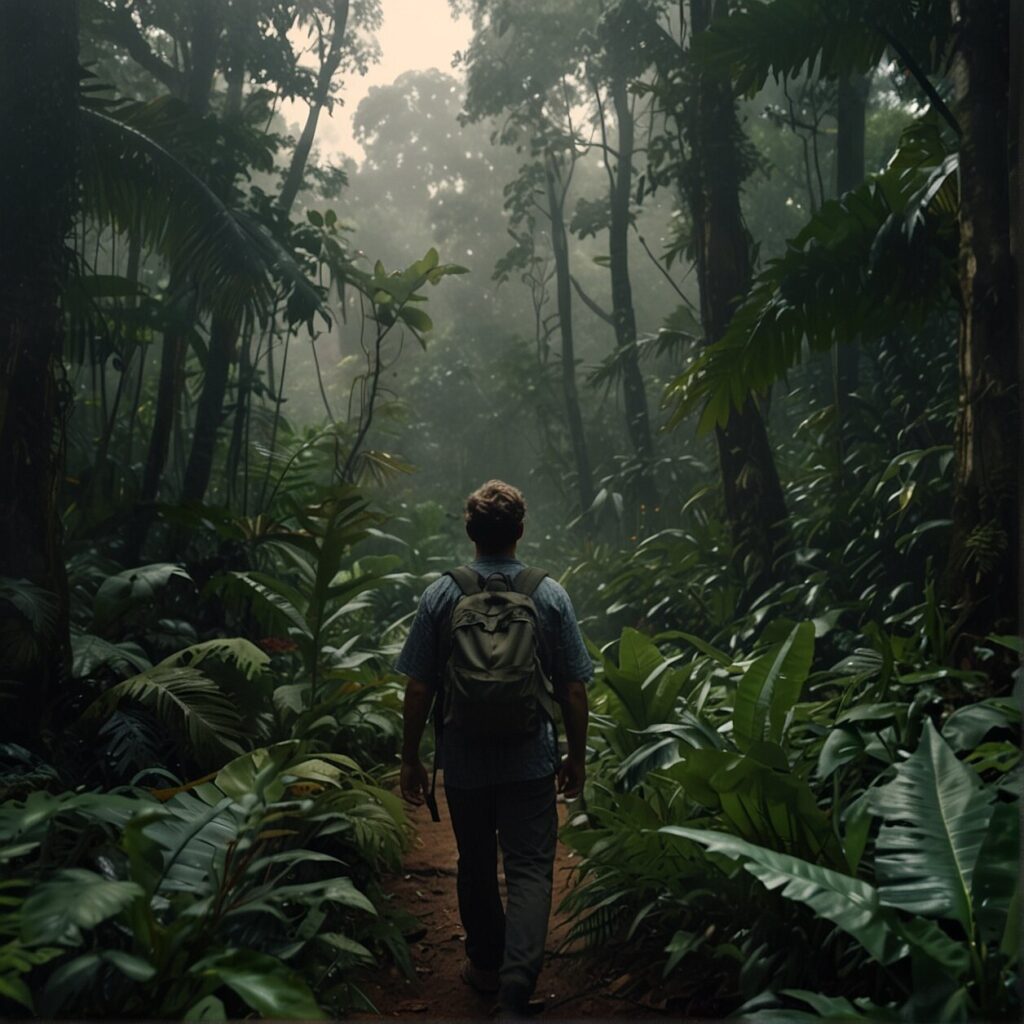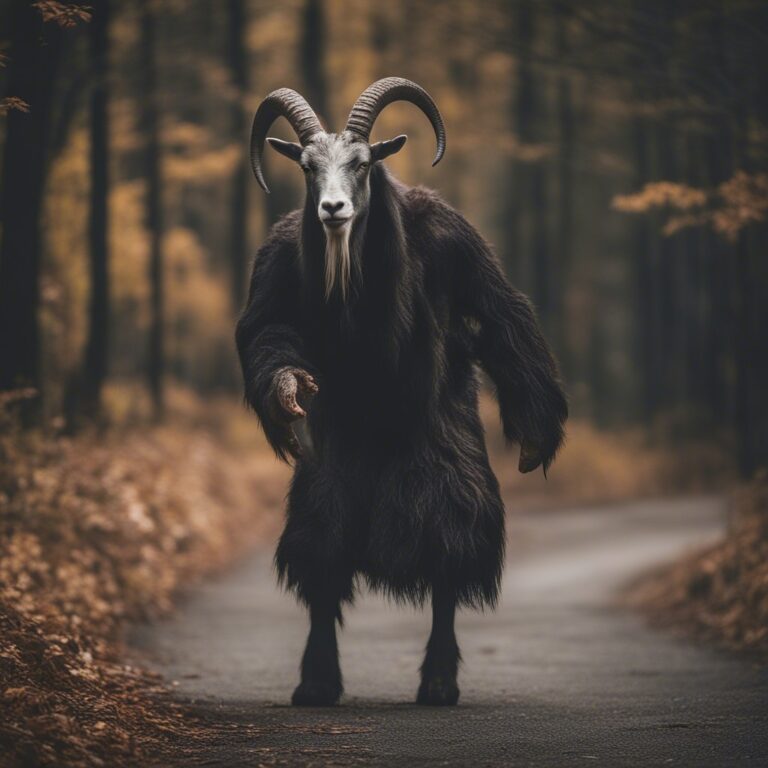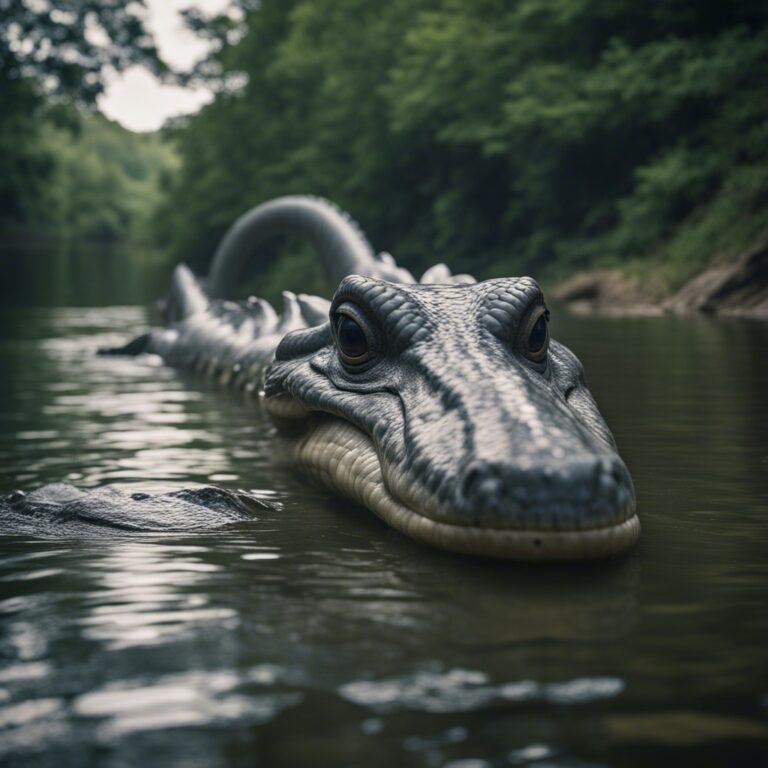Encounter with the Mountain Gorillas in Rwanda
Embarking on a journey to encounter mountain gorillas may seem like straying into the pages of an adventure novel, where the ethereal, mist-clad mountains of Rwanda form the backdrop. As much daunting as it may sound initially, the experience of coming face-to-face with these gentle giants—nature’s marvels in their most intimate setting—is truly an incomparable one.
But as you find yourself peering through lush foliage, waiting for that first glimpse of black fur, remember that this is not just about thrill and exhilaration. It’s a journey into understanding, camaraderie, and mutual respect.
In the heart of Rwanda’s emerald wilderness, we, the humans, are the visitors. The orchestrators of this extraordinary assembly are the mountain gorillas: our distant cousins sharing DNA, and powerful symbols of the fragile biodiversity we struggle to protect.
This deep dive doesn’t just aim to narrate the captivating tales of such expeditions, it spotlights the relentless conservation efforts shaping their present and future. As you read, you’ll be transported to the verdant slopes of Rwanda, learn about the fascinating behavior of these incredible beings, and gain insights into this unique adventure.
- Preparing for the encounter
- Understanding the behavior of mountain gorillas
- A personal account of face-to-face interaction
- The transition from Safari to Mountain trek
- Answers to your most pressing questions
Now, nestle into your seat and let this virtual journey commence. Because it’s impossible to return from this exploration without a profound sense of wonder, admiration, and an ignited zeal for conservation.
Journey into the Heart of Rwanda: The Trek to See Mountain Gorillas
Imagine leafy canopy rustling overhead, sunlight peeping through branches anointing the ground with flickers of gold. Powerful senses of anticipation and awe permeate the air as you journey deeper into the lush, vibrant wilderness of Rwanda, eager for your first encounter with the majestic mountain gorillas.
Starting from the muddy village paths, you’ll tread cautiously, winding through vibrant crops of eucalyptus tobacco and bamboo. The incredibly knowledgeable guides set the pace, leading towards the dense Montane rainforest – the enchanting realm of Rwanda’s iconic primates.
Armed with your walking stick and machete, you’ll pave your path through thicket and undergrowth, reveling in the cacophony of bird songs, the chirps of insects, and the distant hoots of colobus monkeys high in the trees. The arrestingly picturesque backdrop of green valleys and towering volcanoes, peeking through the sheen of mist, provides a feeling of tranquility and truly timeless beauty.
At some point, you’ll feel it: a sudden stillness that falls over the forest, a powerful presence that speaks to an age-old kinship. It means you’re close, very close. It’s then that your heart may skip a beat, your breath may catch, and the hairs on the back of your neck may stand on end. You’re about to meet the mountain gorillas of Rwanda. A captivating experience, a lifetime memory begins to unfold. But remember, as spellbinding as this encounter is, it highlights the profound need for conservation efforts, ensuring that future generations can also share this magical experience.
Preparing for your Encounter: What to Know Beforehand
Striding into the dense undergrowth of Parc National des Volcans (Volcanoes National Park), home to Rwanda’s celebrated mountain gorillas, is an exhilarating endeavor. But to ensure your trek is as safe and rewarding as possible, you’ll need to be adequately prepared.
Physical Fitness
Don’t underestimate the physical exertion required. While your pace will largely be determined by the lead gorilla tracker and the group’s fitness level, former visitors often recount the terrain as challenging and steep. However, the thrill of the hunt and the reward of encountering gorillas in the wild typically outweigh any temporary physical fatigue.
Appropriate Attire
Dressing correctly is essential. Lightweight, quick-drying clothing in earth tones is recommended, ensuring you blend effortlessly with the natural surroundings. You’ll also want solid hiking boots as the muddy paths can be slippery and uneven.
Health Precautions
Mountain gorillas share over 98% of our DNA, making them susceptible to many human diseases. Therefore, if you’re feeling unwell in any way, it’s imperative to disclose this to park staff. Remember, this journey isn’t just about meeting these majestic creatures; it’s about their preservation too.
Porter Services
Finally, consider hiring a local porter. Not only will they carry your gear throughout the trek, but their employment also brings vital income to the local community.
As you start your journey, remember to carry respect for the mighty creatures and awe for the spectacular vistas of this amazing walk into the wild. Preparation is key, and your diligent planning will pay off in unparalleled memories of your mountain gorilla encounter.

Understanding Our Cousins: Mountain Gorilla Behavior
The first thing you’ll notice about these majestic creatures is their tranquility. Mountain gorillas are generally peaceful and prefer to socialize and forage rather than engage in conflict. They live in stable, cohesive groups, comprising one dominant male, multiple females, and their offspring.
The dominant male, known as a silverback due to the characteristic silver hair on its back, is the group’s protector and leader. He takes on the role of decision-maker, determining everything from sleeping sites to movement paths. The bond between the silverback and his group is strong, and he’ll fiercely defend it even at the cost of his life.
Despite their powerful build and intimidating size, mountain gorillas are obligate herbivores. Their diet majorly consists of leaves, bamboo shoots, and fruits. However, they occasionally supplement their diet with small invertebrates, offering a rare glimpse of their complex feeding habits.
The bulk of their day is spent in the pursuit of food, which they often combine with rest periods. They rise at sunrise and forage until late morning before taking a midday nap. The afternoon consists of more eating followed by resting before another night’s sleep. This systematic, quiet rhythm of life is part of what makes interacting with them so captivating.
Communication is an integral part of mountain gorilla society, and they use a combination of body postures, facial expressions, and vocal sounds to communicate with each other. Understanding their behavior helps in mutual respect and peaceful human-gorilla interactions during gorilla tracking tours.
Their mild-mannered nature, tight-knit family structures, and communicative behavior reveal the mountain gorillas as fascinating creatures that share inherent similarities with humans. Recognizing these parallels aids in appreciating them beyond just wildlife, further emphasizing the urgent need for their protection and conservation.
Face to Face with Gentle Giants: A Personal Experience
As you first lock eyes with a mountain gorilla, you experience an indescribable feeling of awe. You hold your breath as its curious gaze meets yours, almost mirrored in expression. You immediately realize that you are in the presence of a sentient being, gentle yet imbued with primal power. This is an experience entirely unique and humbling.
They often roam in troops led by a dominant silverback, a mature male with prominent marking of silver hair running down his back. His sheer size distinguishes him from the rest of the troop — you will see that he commands respect not just from his troop, but also from those humans lucky enough to encounter him.
As an observer, you are granted a rare glimpse into their daily lives. You might see mothers tenderly nursing their young, juveniles energetically exploring their surroundings, or perhaps the silverback lounging, surveying his family with a measured gaze. Each shared glance, each interaction — it’s a privilege to be allowed into their world.
The chronological journey to this moment may have been rigorous, but emotionally, it has barely begun. In this encounter time loses its meaning, every minute seems to stretch into eternity, and you may experience a profound connectedness with these majestic creatures.
Finally, as you reluctantly retreat, leaving the gorillas to their tranquility, you come away with a sense of touching the sublime. You know the experience will dwell within you, poignant and reverberating. This unparalleled encounter underscores the importance of such conservation efforts, not just for these magnificent primates, but for the entire symbiotic harmony of our planet.

From Safari to Mountain Trek: What to Expect
When voyaging from a traditional safari to embark on a mountain trek in Rwanda, the transition can be a thrilling yet intimidating experience. Be prepared to switch from the comfort of your safari vehicle to the rugged terrain of Rwanda’s volcanic mountains. It is indeed a demanding journey, but one that promises rich rewards.
Your trek commieences with a pre-trek briefing at the park headquarters. Here, you’ll be allocated a gorilla family to visit, and you’ll learn about etiquette and safety measures. Job well done, now, the trek proper begins. From the foot of the mountain, you’ll hike through lush farmlands before encountering the first wall of dense bamboo forests.
As your eyes start to adapt to the thick greenery, you’ll notice the wild forest sounds surrounding you. The chatters of golden monkeys, distant calls of various bird species and the crisp crackling of branches under your feet will be the soundtrack to your adventure. Expect sudden changes in temperature, terrain, and altitude. Climbing the cold, high-altitude jungles can often make for a challenging walk, but remember, the journey itself is an important part of the experience.
Wait, feeling exhausted? Fear not! The pace of the trek is tailored to suit the group’s abilities, and you’ll be given ample opportunities to rest, hydrate and take photos. It’s often when you stop, look and listen that you discover the many wonders of this rich ecosystem.
Finally, reaching your gorilla family destination brings an indescribable joy; the laborious trail you passed seems insignificant. Achingly beautfiul, the gorillas resting, eating and playing in their natural habitat, is a validation of your strenuous journey. Be prepared to deeply moved and forever changed by this magnificent encounter.
From safari to trek, every part of this journey is truly an unforgettable adventure for the strong-hearted and the conservation-minded tourists alike. This is your ultimate call to the wild, a call to witness the breathtaking dance of nature and wildlife in harmony.
FAQ’S
Before we wrap up, it’s worth taking a moment to address some frequent curiosities and inquiries. Whether it’s concerns about safety, optimal times to visit, or packing checklists, visitors often come equipped with a host of questions about the transformative journey to see mountain gorillas in Rwanda. Read through our answers to these frequently asked questions to gather additional insights and make your visit as smooth and memorable as possible.
When is the most suitable time to visit mountain gorillas in Rwanda?
Timing your visit properly can significantly enhance your encounter with the mountain gorillas. While Rwanda has a fairly temperate climate year-round, there are two optimal seasons to consider for gorilla trekking.
The dry seasons, from mid-May to September and again from December to February, are generally better choices. During these dryer months, the paths are less muddy, and mosquitoes, which can carry diseases, are not as prevalent. Additionally, the gorillas are often easier to locate since they tend to gather near clearings and water sources during these drier periods.
However, keep in mind that these time slots are also the peak tourist seasons. If you’re looking for a quieter, less crowded experience or if you’re on a budget, consider visiting during the rainy season. The gorillas can still be seen year-round, and the lush greenery during the rainy periods provides an equally breathtaking backdrop for your adventure. Plus, the permit prices tend to be lower during these off-peak times.
Whatever time of year you choose, it’s vital to remember that weather in the mountains can be unpredictable. Even during the dry season, sudden bouts of rain can happen. Dependency on your trip – merely seeing gorillas or wishing for the perfect photo opportunity – will dictate the best time for you. Regardless of when you go, witnessing these majestic creatures in their natural habitat is indeed an experience of a lifetime.
What are the rules and regulations for visiting mountain gorillas in Rwanda?
To ensure the welfare and survival of the magnificent mountain gorillas, Rwanda has laid out stringent rules and regulations for visitors. Adherence to these guidelines is not an option but a requirement.
Every individual planning a visit must first acquire a tracking permit from the Rwanda Development Board. This not only guarantees your visit but contributes to the conservation initiatives.
The number of visitors per day is limited to reduce human impact on the gorillas’ natural habitat. Each group is allowed to visit for only one hour. This minimizes the behavioral disturbance and potential disease transmission from humans to gorillas.
Maintaining a seven-meter distance from the gorillas is compulsory. This is to prevent transmission of human diseases to the gorillas. If someone accidentally gets closer, they’re required to move away gently.
Flash photography is prohibited. It could scare the gorillas and provoke them. It’s best to disable flash on your camera or smartphone beforehand to avoid any mishaps.
Feeding or touching the gorillas is absolutely forbidden. Despite the resemblance to humans, they are wild animals with powerful strength. Interacting with them might lead to undesirable consequences.
Lastly, keep your voice low and avoid making abrupt movements during your visit. The gorillas are accustomed to human presence, but these actions could stir anxiety and disrupt their behavior.
These rules and regulations not only promise a safe and enriching experience for the visitors but also ensure the preservation and well-being of the mountain gorillas.
How safe is it to encounter mountain gorillas in Rwanda?
Your safety is indeed a paramount concern during such an adventurous endeavor. In reality, with the right conduct and under the expert guidance of skilled local guides, your encounter with mountain gorillas in Rwanda can be both safe and extremely rewarding. These creatures are predominantly gentle giants when unprovoked.
Mountain gorillas are wild animals and their behavior is unpredictable. However, extensive safety measures are in place to facilitate peaceful encounters between humans and gorillas. You’ll be accompanied by experienced rangers who can interpret the animals’ behavior, warning you to back off if the gorillas feel threatened or exhibit signs of agitation. As you approach the gorillas, you’ll need to lower your gaze and adopt a submissive posture, speaking only in whispers. These actions reassure the gorillas, communicating that you aren’t a threat.
Strict rules also apply to protect the gorillas from human diseases, which they’re incredibly susceptible to. For instance, visitors must stay a minimum of seven meters away from the gorillas, avoid direct eye contact, and never touch the animals. If you’re feeling sick or have a contagious disease, you must avoid visiting the gorillas. Such precautions, mainly designed to safeguard the gorillas themselves, serve a dual purpose—ensuring your safety, too.
Remember that the gorillas are accustomed to human presence, thanks to years of careful habituation by conservation staff. While there is always an inherent degree of risk when dealing with wild animals, by respecting the guidelines and taking the right precautions, you can feel confident about your safety when coming face-to-face with Rwanda’s mountain gorillas.
What should I pack for a trip to see the mountain gorillas in Rwanda?
When packing for a trip to see the mountain gorillas in Rwanda, it’s important to get the essentials right. This isn’t your typical holiday, and your packing list should reflect the unique demands of trekking through the mountainous jungle environment.
Sturdy Footwear: Your shoes are probably the most critical item that you’ll need for this journey. Opt for hiking boots that are comfortable, waterproof and have good ankle support. Trekking can take anywhere between 1 to 8 hours, so your feet need to be prepared.
Suitable Clothing: Long pants and long-sleeved tops are advisable to protect against prickly vegetation and possible insect bites. Lightweight, quick-drying materials are best. The mornings can be chilly, but it warms up as the day progresses, so dressing in layers is helpful. A waterproof jacket is also encouraged in case of sudden downpours, which are common in the mountains.
Accessories: Besides clothing, other essentials include a good-quality hat and sunglasses for protection from the sun, as well as thick gloves to protect your hands while you’re hiking through dense vegetation. A bandana or buff can be used to wipe away sweat or provide a barrier between your face and the potential wildlife.
Health supplies: Remember to pack essentials like insect repellent, sunblock, basic first-aid items, prescription medications, and altitude sickness remedies if needed.
Lastly, pack a sense of awe and an open mind. Seeing these majestic creatures in their natural habitat promises to be a truly unforgettable experience. That said, remember the golden rule of sustainable travel: take only photographs, leave only footprints.
Can I photograph the mountain gorillas during my visit to Rwanda?
Certainly, but it’s not quite as simple as point and shoot. The Rwandan government and conservation agencies have implemented specific guidelines in order to minimize disruption to the mountain gorillas’ natural behavior and environment. These rules are in place to ensure a consistent, non-threatening experience for these beautiful creatures.
Firstly, flash photography is strictly prohibited. The sharp light can frighten the gorillas and disrupt their natural behavior. Hence, it’s crucial to prepare and adjust your camera settings accordingly before embarking on your trek. When photographing gorillas, aim to be quick and subtle, as excessive clicking sounds can also disturb them.
Secondly, you must maintain an appropriate distance quite a ways from the gorillas—typically about 7 meters (or 23 feet) to prevent any potential risk of disease transmission or accidental injury. Bear in mind that these are wild animals, and while mountain gorillas are generally peaceful, they can be unpredictable.
Lastly, always prioritize the gorillas’ welfare over getting the perfect shot. If a guide asks you to move or stop taking photos, follow their instructions immediately. Remember, we’re in their home and our main goal is to observe and appreciate them without causing stress or harm.
All these rules may seem overwhelming, but rest assured, they serve to provide a safe and respectful environment for both the gorillas and visitors alike. Happy photographing!







